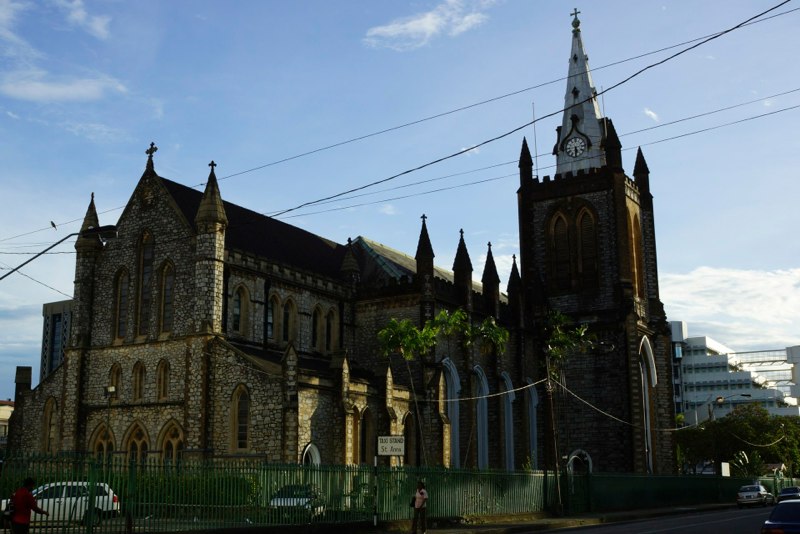In Trinidad, pristine mangrove swamps and rain-forested hills sit side by side with smoke-belching oil refineries and ugly industrial estates. Tobago has everything you expect from a Caribbean island, with palm trees and white sand aplenty, yet it is relatively unchanged by the tourist industry.
Leaving Barbados is as efficient as entering it and we are quickly airborne. We are flying pretty much south over the island of Tobago to Port of Spain in Trinidad. Unfortunately the handling here is bloody slow and we decide to split up our group. The pilots wait over three hours for the fuel!! Therefore a very late lunch in a fantastic hotel
In the meantime it stopped raining and we decide to explore the old city. Traffic in the main roads is an absolute nightmare – it just does not move. There are not many sights to tick off but there is plenty of atmosphere in the downtown streets with their market stalls, shady squares, old churches and old houses.
Early dinner at the hotel since we have to get up early next morning. If possible, we want to make the 13.00h guided tour through the ESA launch site in French Guayana.
When Trinidad was explored by Columbus in 1498, it was inhabited by the Arawaks; Carib Indians inhabited Tobago. Trinidad remained in Spanish possession, despite raids by other European nations, until it was ceded to Britain in 1802. Tobago passed between Britain and France several times, but it was ultimately given to Britain in 1814. Slavery was abolished in 1834. Between 1845 and 1917, thousands of indentured workers were brought from India to work on sugarcane plantations. In 1889 Trinidad and Tobago were made a single colony.
Partial self-government was instituted in 1925, and from 1958 to 1962 the nation was part of the West Indies Federation. On Aug. 31, 1962, it gained independence and on Aug. 1, 1976, Trinidad and Tobago became a republic, remaining within the Commonwealth. While the country is a stable democracy and enjoys the highest living standards in the Caribbean thanks to oil revenue, tension between East Indians and blacks has underlined much of political life. In 1970 the tension was the underlying cause of riots, protests, and an army mutiny for the end of foreign influence over the economy. These events prompted a state of emergency which lasted for two years.
Eric Williams, “Father of the Nation” and leader of the People’s National Movement (PNM), which is largely supported by blacks, governed from 1956 until his death in 1981. In Dec. 1986 the multiracial National Alliance for Reconstruction (NAR), based in Tobago, won a parliamentary majority, promising to sell most state-owned companies, reorganize the civil service, and reduce dependence on oil.
In July 1990 members of a minority Muslim group attempted a coup, stormed parliament and took 45 hostages, including Prime Minister ANR Robinson. Though the coup failed, it undermined the government and the PNM returned to power
